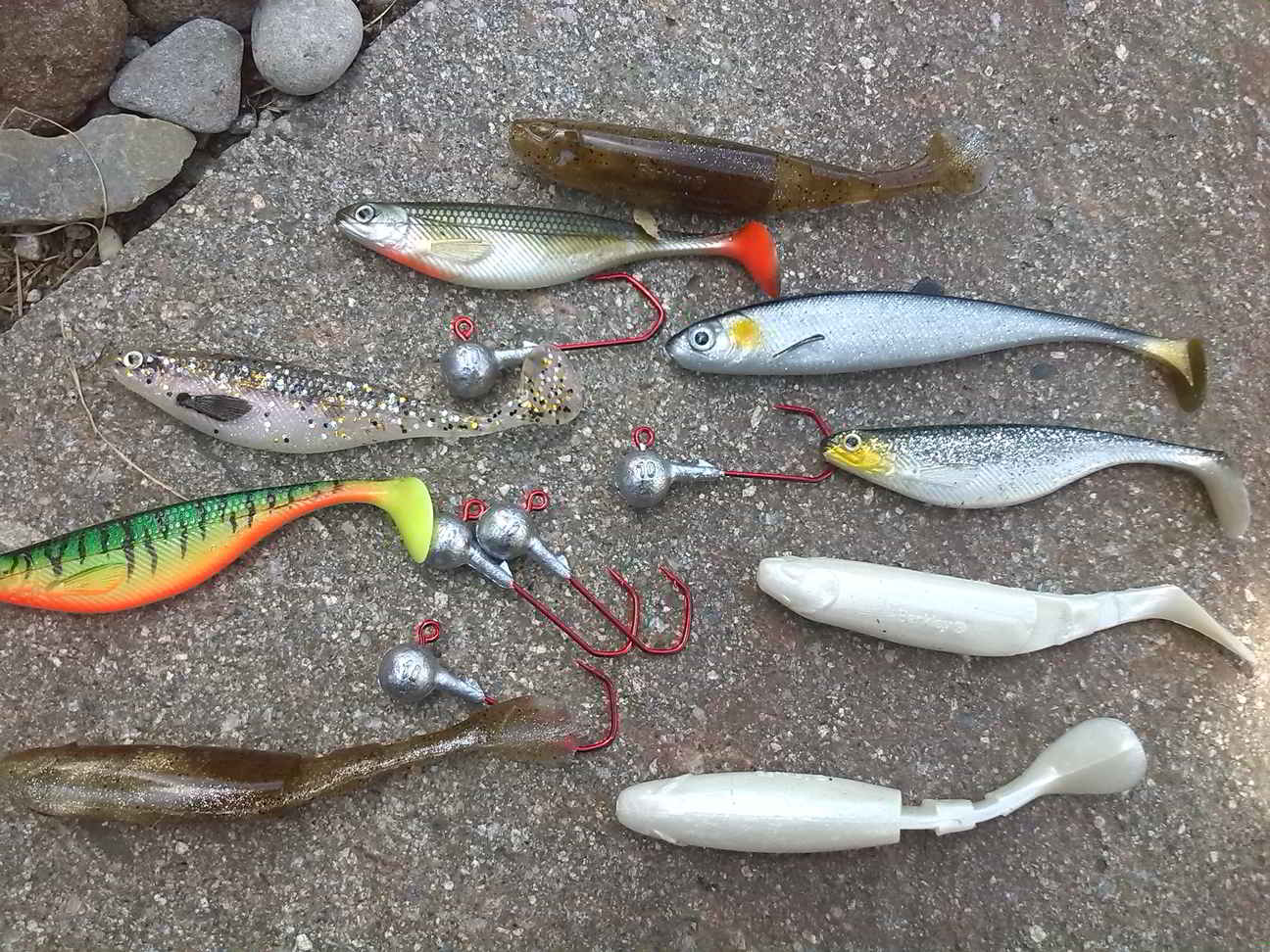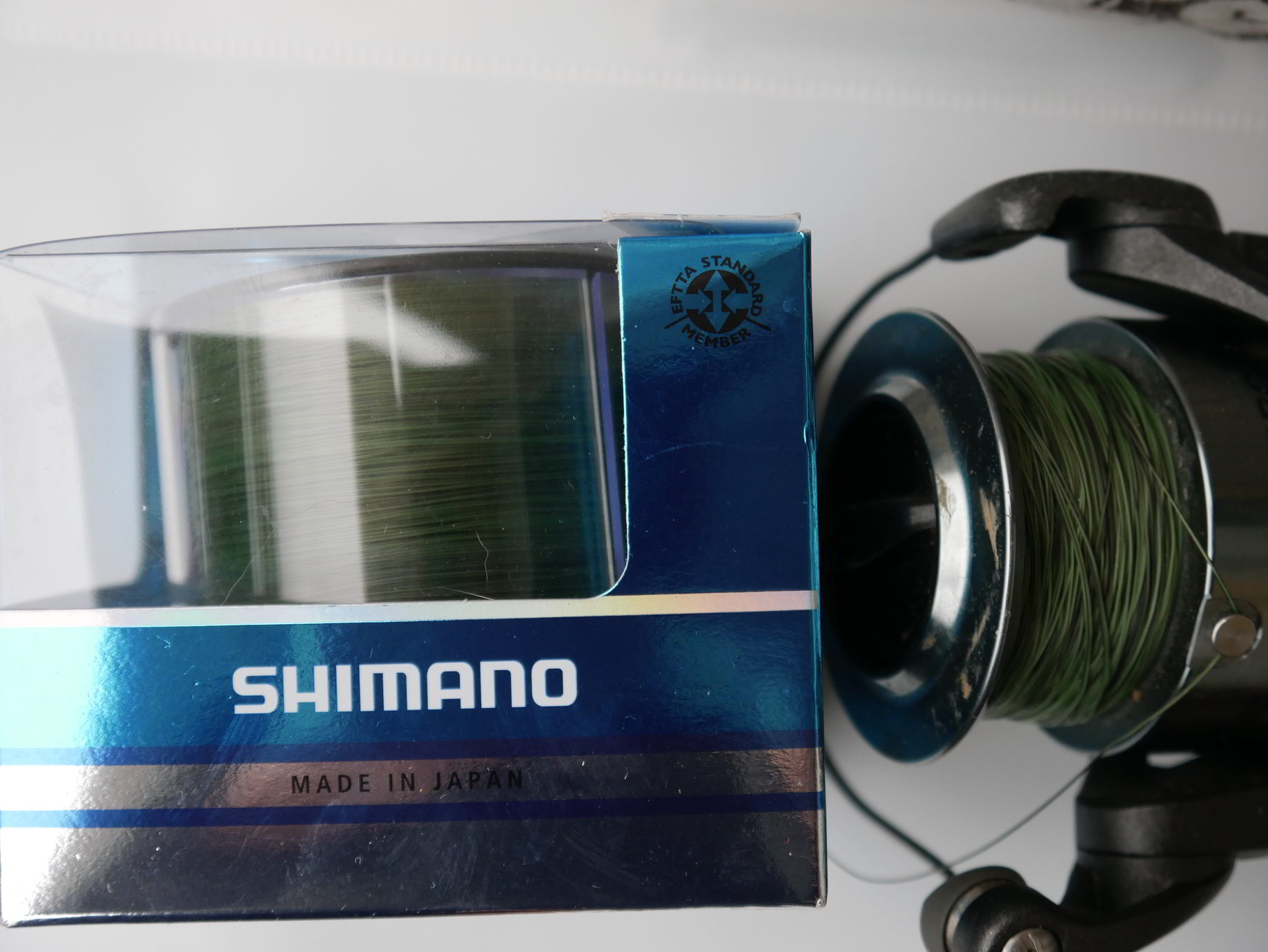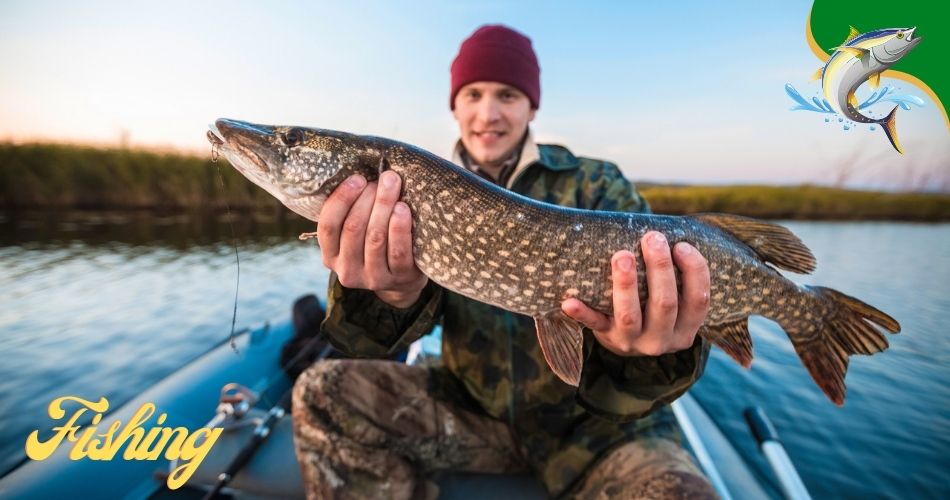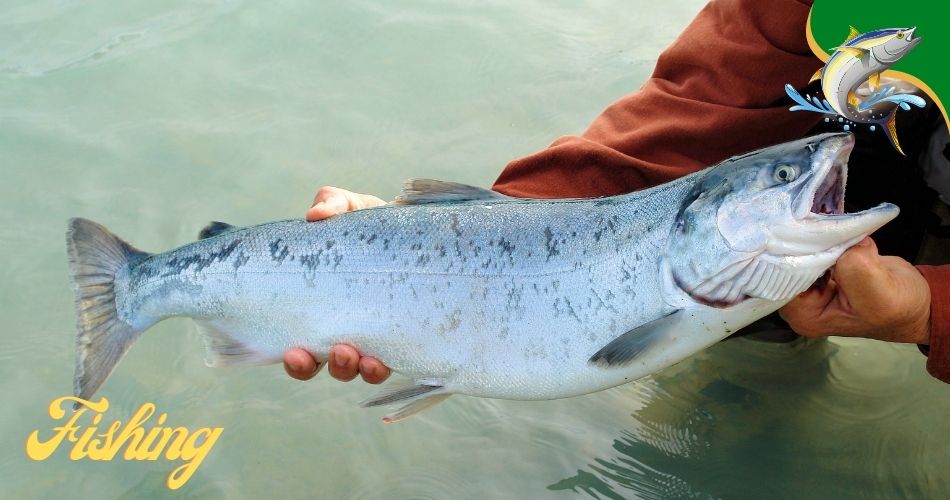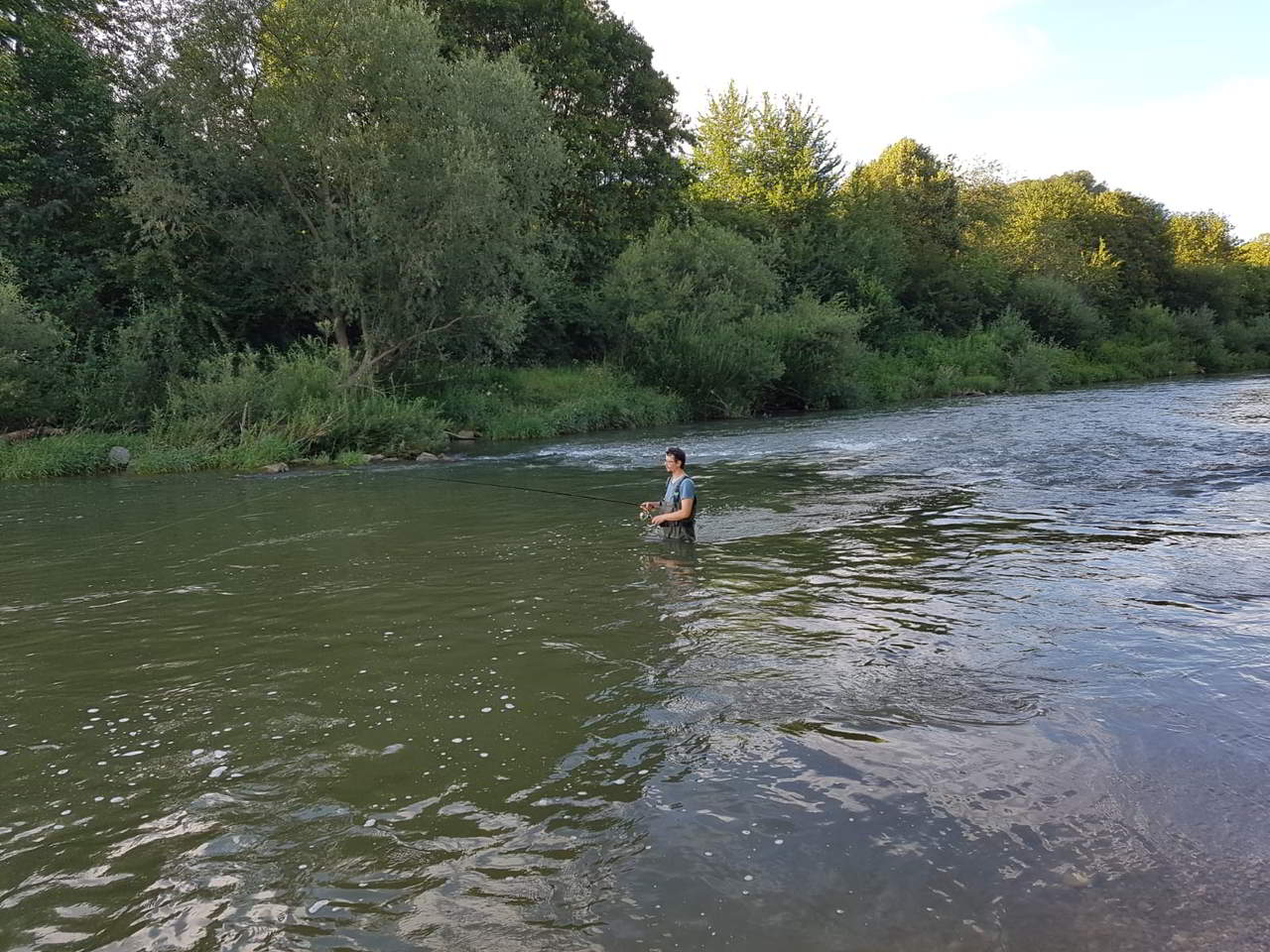Over two years ago, the Shimano Technium line was recommended to me for my freewheel…
Rubber fish fishing for pikeperch and perch
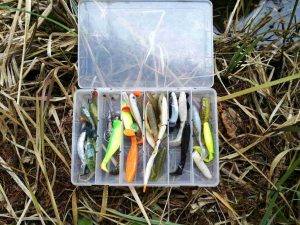
Angling with rubber fish is still one of the most popular and best ways to catch pikeperch and perch. Especially pikeperch, which previously could only be caught in the evening or at night with wobblers and occasionally with spinners, can also be caught during the day thanks to the rubber fish on the jig head. In this article, I’ll show you how to successfully fish for pikeperch or perch with rubber fish.
Rubber fish color
Rubber fish are now available in all colors and shapes. What
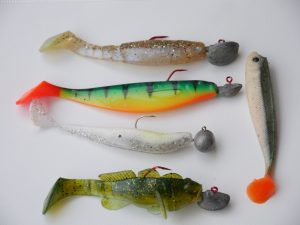
Wanting the fish exactly depends above all on the water. But you can never go wrong with natural colored rubber fish. So white and brown bait fish belong in every bait box. Shock-colored rubber fish have proven their worth when the water is cloudy and visibility is poor. This also includes the well-known Firetiger pattern, which is also noticeable with its strong contrasts.
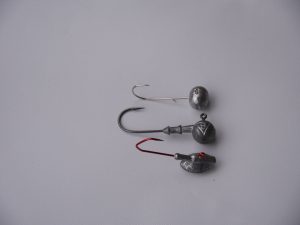
Weight of the lead head
The weight we need for our jig heads also depends on the water. Above all, however, it depends on the current and the depth of the water. After all, we always want to be in contact with our rubber fish so that we can catch bites immediately. At the same time, the jig head also decisively determines the length of the sinking phase of the rubber fish. The size of our rubber fish also has an influence, the bigger, the heavier jig heads we need and vice versa. A sinking phase of at least 1 second this should always be guaranteed if the water bed is shallow. Up to 3 seconds are in the normal range, because with longer sinking phases we are often too far removed from the catching area.
- For Stilgewässer up to 5 m water depth are jig heads from 5 to 10 Gram ideal. If the water is deeper, it can be correspondingly more.
- On rivers, the current plays an important role in how heavy our jig head has to be. Most of the time, at least 10 grams and more are required. In areas of the Rhine with a strong flow, it sometimes takes 30-35 grams, but most of the time we are in between and 14-20 grams are sufficient.
The fishing equipment for pikeperch
- As Spinning route if a fast and stiff rod is used, I present some top pikeperch rods here >>.
- A 2500-3000 role is ideal for pikeperch. I have created an overview of good spinning reels here >>.
- Also the Main line is important the best are braided ones with a diameter of 0.12-0.16 mm or, if necessary, monofilaments with a diameter of 0.25 mm. The cord should be best in flashy colors like yellow, pink, or red. I also wrote a big test about cords >>
- As Leader a steel leader should be used in waters where pike are also found. 6-8 kg load capacity is enough. Otherwise I use a 0.25 fluorocarbon leader.
- A hook or is attached to the leader Snapto be able to change the bait quickly.
Of course, you also need a landing net and the usual fishing accessories, such as a pair of tongs, loosening hooks etc. but most of them already have that.
Raise rubber fish properly
This is how you raise your rubber fish very easily. So that the tail of the rubber fish runs smoothly, the hook should emerge in the front third up to the middle of the bait.
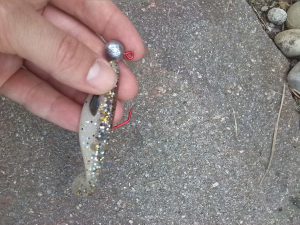
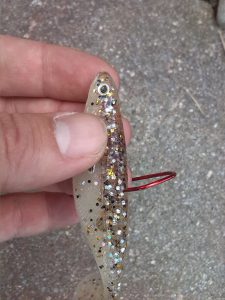
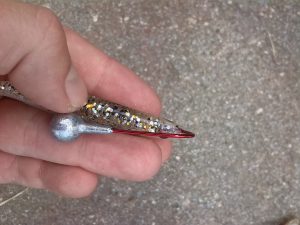
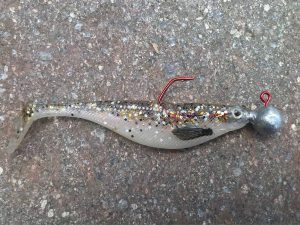
Lounging around and jigging, that’s how it works
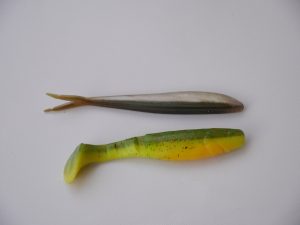
The lounge around is a lazy fishing method, but it doesn’t necessarily catch any worse than jigging. You let the bait sink to the bottom on a taut line and hold the rod parallel to the water in a horizontal position and repeatedly make quick 2-3 turns of the crank, the rod always remains horizontal and the Lure guidance happens only on the role. If the line slackens after cranking, because the bait has ground contact, you crank it again quickly 2-3 crank turns and so on.
At the Classic jigging one also lets the bait sink to the bottom on a tight line and then plucks the bait just above the bottom with the rod. You take the rod with you two to three plucks up and then crank it up more slowly (than when lounging) with two crank turns. Then let the bait sink back to the bottom.
It is always important to fish close to the ground it is also not bad to let the bait drag over the bottom. There are exceptions to this rule, but most of the time it is best to use these two best practices to present the bait close to the bottom. Where the pikeperch stands in the water column during the day.
A little remark: For pike it is often very successful to simply jig the rubber fish in the middle water or simply to catch up with it without having ground contact.
Bite detection when fishing for soft lures for pikeperch and large perch
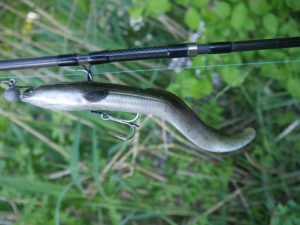
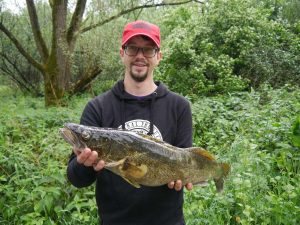
The bite detection when fishing pikeperch with rubber fish is not easy, because pikeperch simply suck in the rubber fish in 90% of the cases in the sinking phase.
The Bite detection when fishing for rubber fish either runs over the tip of the rod, at which, depending on the rod, they also notice the ground contact, or via the line and at the point where the line goes into the water. Does the line suddenly pull something sideways or the bait seems to hit the ground very quickly? Sit down right away! Do you feel a little “tock” or trembling in the blank of your rod? Sit down right away! Very easily in the case of anything unusual, first take a look and you will hardly miss any more bites. Bite detection is also the hardest part of soft lure fishing above the bottom. In addition, the bites usually come in the sinking phase and not when cranking.
Where the pikeperch stands
You can read about this in this article >>, where the best fishing spots and hot spots for pikeperch are described and where you can be successful when in the river or lake.
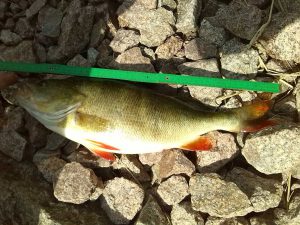
Where perch stand
The hot spot list >> is also helpful here. In general, perch like wood in the water, be it fallen trees or jetties. Depending on the body of water, perch are mainly found in the mean water or on the bottom. Seldom surfaces close to the robbery. We usually catch them with the rubber fish near the bottom of the water.
